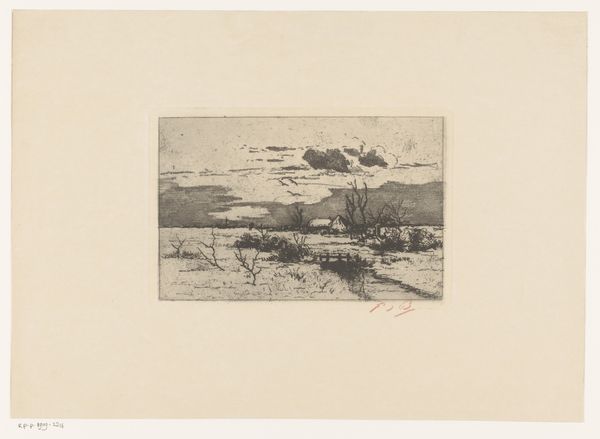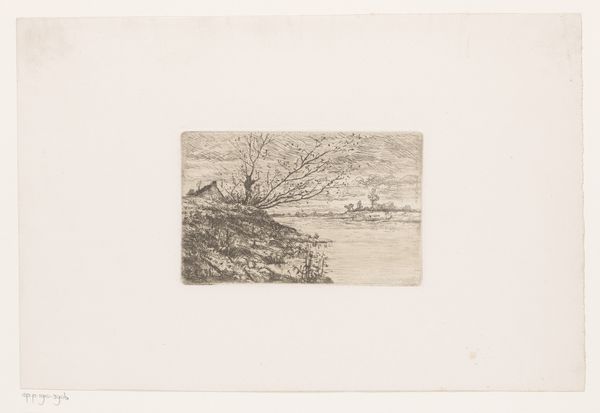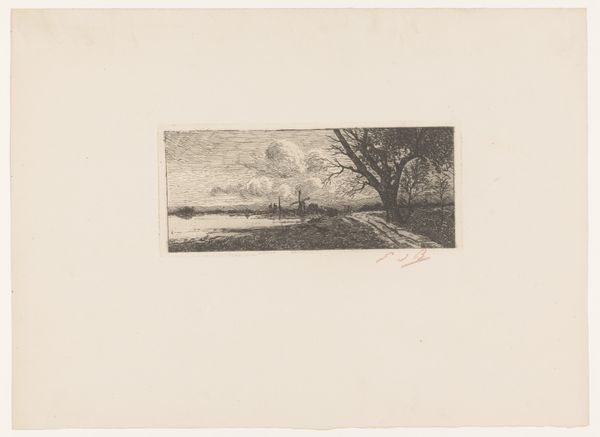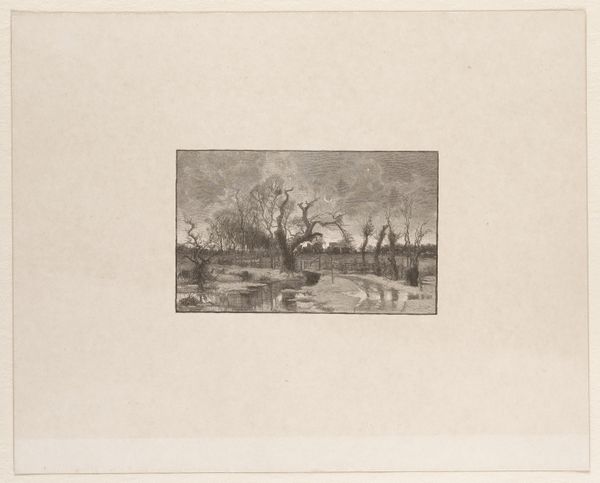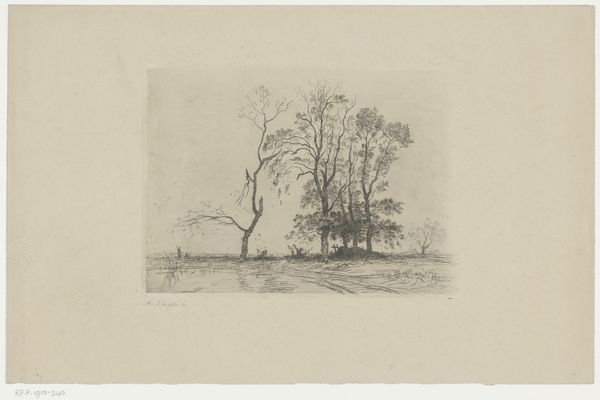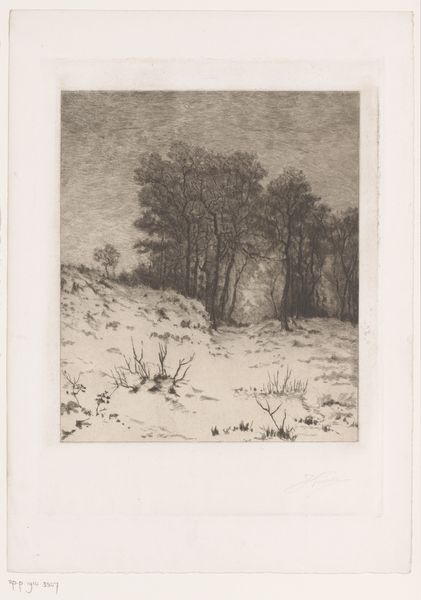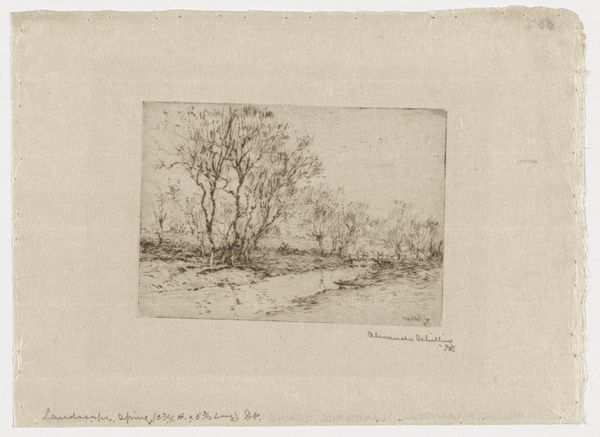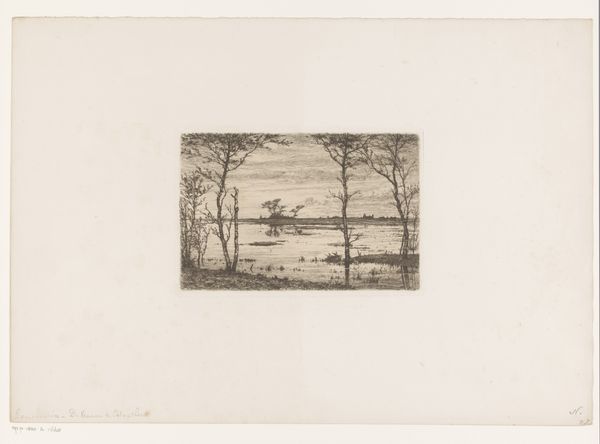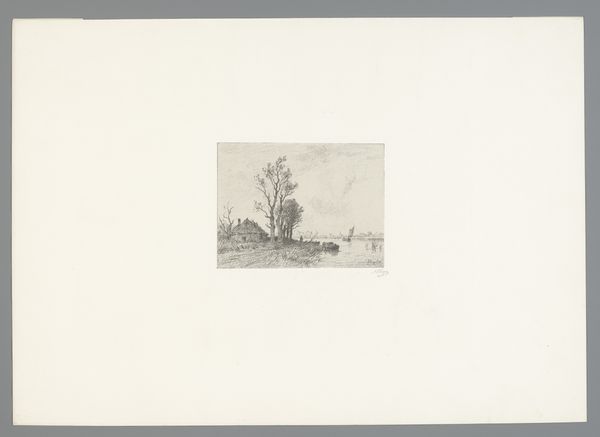
drawing, print, etching
#
drawing
# print
#
etching
#
landscape
#
realism
#
monochrome
Dimensions: height 157 mm, width 218 mm
Copyright: Rijks Museum: Open Domain
Curator: Here we have Henri Rul's "Winter Landscape with Farmhouse," crafted sometime between 1872 and 1913. It's an etching, a printmaking technique known for its fine detail. Editor: It feels remarkably bleak. The muted monochrome and sparse composition really emphasize the cold, desolate feel of winter. Isolate and somber; it is an intriguing choice. Curator: The use of etching truly lends itself to the scene’s atmospheric quality. Notice how the delicate lines create subtle gradations of tone. It gives the impression of both distance and stillness. Look at the lone tree – structurally stark. Editor: And the strategic positioning of the farmhouse; observe the implications this entails in representing the human element dwarfed by the elements. Winter scenes such as this were very fashionable within the public tastes of the era. They emphasized the resilience of nature with how farmers existed as just small components of a giant natural process. Curator: Precisely! Consider the semiotic value as well. The monochrome palette signifies more than just a literal representation; it evokes emotions associated with winter like hardship and the dormancy of nature. Note, how the textures are not attempting to hide; its crude nature and unpretentious surface is part of the art itself. Editor: How might this fit within broader conversations regarding landscape art’s relationship to burgeoning industrialization, or urbanization. Or, we can speculate upon how viewers likely engaged it within institutions devoted toward showcasing artistic realism during the artist's time. Its monochrome nature only augments that. Curator: Fascinating. We can certainly posit the social and political considerations from those points as well! Rul successfully captures a certain raw vulnerability and it speaks to a universal experience, in my estimation. It provides great formal technique with it as well. Editor: Indeed. It invites viewers to reflect not only on the realities of rural life and natural elements of art history, but their own relationship with those spaces. Thanks.
Comments
No comments
Be the first to comment and join the conversation on the ultimate creative platform.
